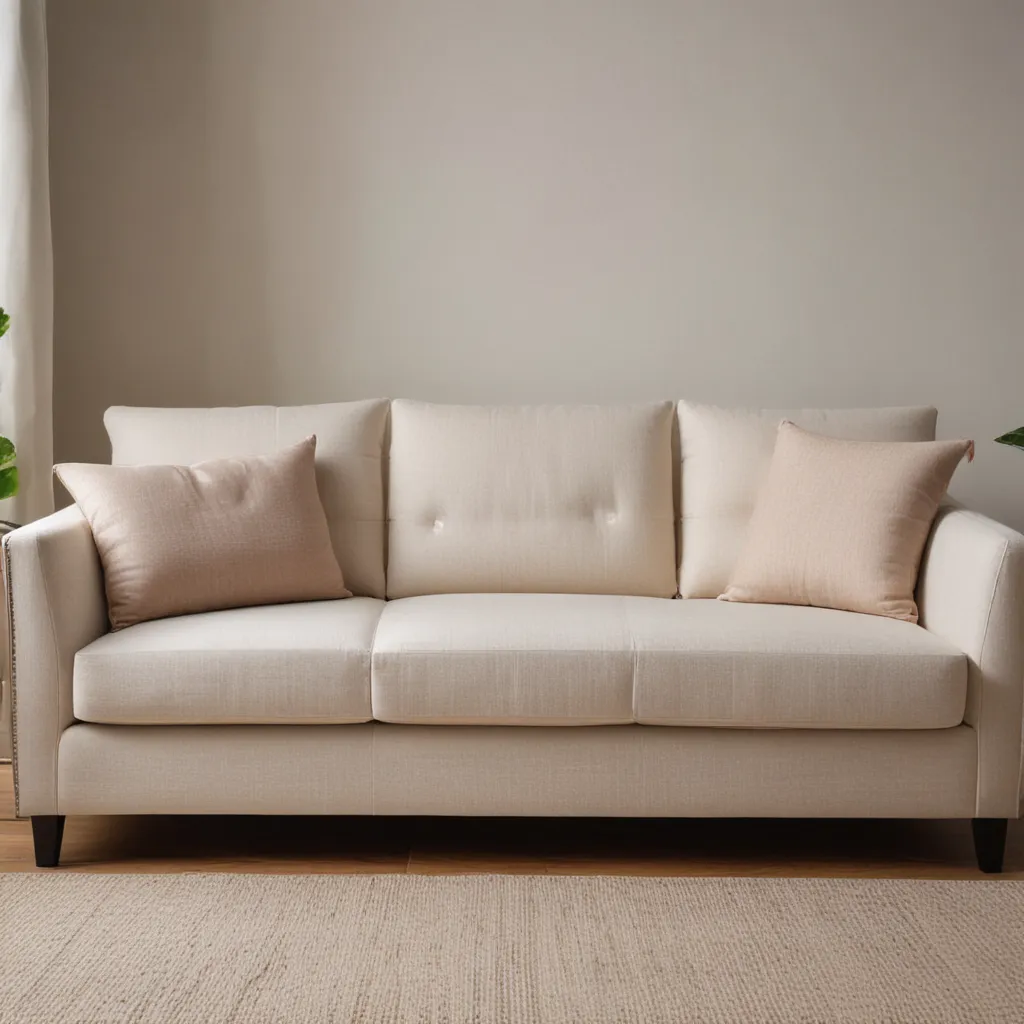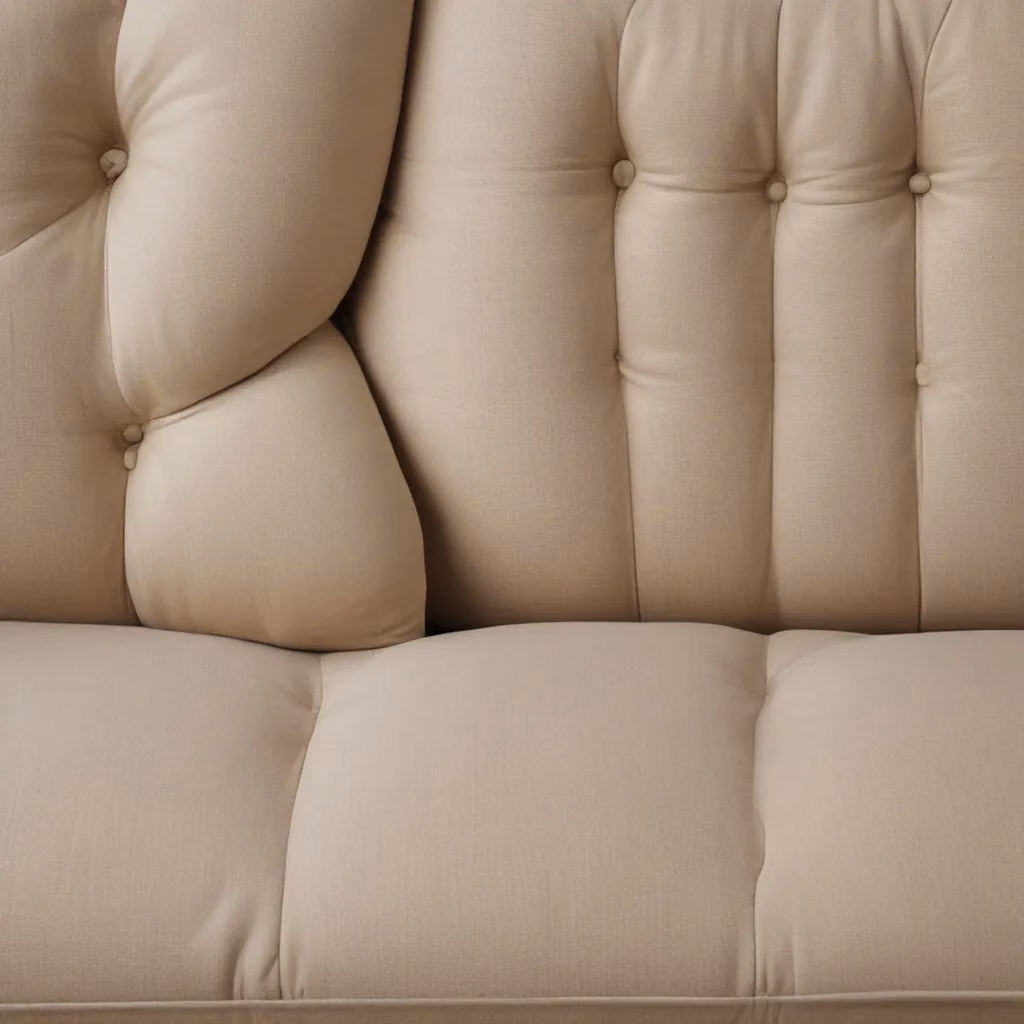Spilling Red Wine on Your Brand New Sofa? Not Today, Satan!
I’ll never forget the day I spilled an entire glass of Merlot all over my brand new, pristine white sofa. It was like watching a car crash in slow motion – the glass tipping, the red liquid cascading over the edge, and me, frozen in sheer horror as my heart sank to the depths of my stomach.
“No, no, no!” I remember yelling, as I frantically grabbed a towel and started blotting the fabric, my hands shaking like a leaf. But it was no use – the damage was done, and that stubborn red stain wasn’t going anywhere.
I’ll spare you the gory details of my futile attempts to salvage the situation, but let’s just say it involved a lot of crying, cursing, and probably more wine consumption than was advisable. Needless to say, that sofa never looked the same again.
If only I had known then what I know now about fabric protection and stain-resistant upholstery, I could have spared myself the heartache (and the hefty bill for a professional cleaning). That’s why I’m here to share my hard-earned wisdom with you, dear reader, so you can avoid the same pitfalls and keep your sofa looking fresh and fabulous for years to come.
The Lowdown on Fabric Protection
When it comes to protecting your sofa from life’s little (and not-so-little) mishaps, fabric protection is your best friend. Simply put, it’s a specialized coating or treatment that’s applied to the upholstery fabric, creating an invisible barrier against stains, spills, and everyday wear and tear.
Now, you might be thinking, “But won’t that make my sofa feel all stiff and uncomfortable?” Fear not, my friends – the latest advancements in fabric protection technology have resulted in formulas that are highly effective without compromising the soft, supple feel of your upholstery.
In fact, many of these stain-resistant fabrics are actually more durable and long-lasting than their untreated counterparts. According to the experts at The Stated Home, the combination of fine polyester and cotton yarns used in these fabrics results in a high Martindale Rub Count, meaning they can withstand heavy use and cleaning without losing their luxurious feel or appearance.
The Science Behind Stain Resistance
So, how exactly does fabric protection work its magic? It all comes down to the molecular structure of the fibers and the way the protective coating interacts with them.
Traditional upholstery fabrics, like cotton or linen, have a natural affinity for water and other liquids, which is why they’re so susceptible to staining. The individual fibers are essentially like little sponges, eagerly soaking up any spilled substances.
But with stain-resistant fabrics, the game changes. These fabrics are typically made from synthetic fibers like polyester or a blend of natural and synthetic materials. The key is that the protective coating applied to the fabric creates a hydrophobic (water-repellent) surface, causing liquids to bead up and roll off rather than being absorbed.
As the experts at Kardiel explain, the combination of fine polyester and cotton yarns used in their stain-resistant velvet fabric results in a high Martindale Rub Count, meaning it can withstand heavy use and cleaning without losing its luxurious feel or appearance.
But the benefits of fabric protection go beyond just stain resistance. Many of these treatments also provide enhanced UV protection, helping to prevent fading and discoloration from sun exposure. And let’s not forget the all-important crease and wrinkle resistance, which can keep your sofa looking sharp and polished even after years of use.
Choosing the Right Fabric Protection
Now, with all this talk of science and technology, you might be wondering, “How do I know which fabric protection is right for my sofa?” Fear not, my friends, I’ve got you covered.
When it comes to choosing the perfect fabric protection, there are a few key factors to consider:
-
Fabric Type: Not all fabric protection solutions are created equal, and different materials may require different treatments. For example, a delicate silk sofa may need a gentler, more specialized formula compared to a durable microfiber or velvet upholstery.
-
Lifestyle and Usage: If you have pets, kids, or a generally active household, you’ll want a super-tough, industrial-strength fabric protection that can withstand heavy use and frequent cleaning. On the other hand, if your sofa is more of a formal, occasional-use piece, you might be able to get away with a lighter-duty treatment.
-
Environmental Factors: Consider the climate and lighting conditions in your home. If you live in a sunny, humid region, you’ll want a fabric protection that offers robust UV and moisture resistance to prevent fading and mildew.
-
Application Method: Some fabric protection solutions come in the form of a spray-on treatment, while others may need to be applied by a professional. Think about your own DIY skills and the time and effort you’re willing to invest in the process.
To give you a more concrete idea, let’s take a look at a comparison of some popular fabric protection options:
| Product | Fabric Types | Stain Resistance | Durability | Application |
|---|---|---|---|---|
| Scotchgard Fabric Protector | Cotton, polyester, microfiber | Excellent | Moderate | DIY spray |
| Guardsman Fabric Protection | Leather, suede, microfiber | Excellent | High | Professional application |
| Nano-Tex Fabric Protector | Natural and synthetic blends | Excellent | High | DIY spray |
| Fiber-Seal Fabric Protection | Fine fabrics (silk, velvet) | Excellent | High | Professional application |
As you can see, there’s a wide range of options to choose from, each with its own unique benefits and considerations. The key is to do your research, consider your specific needs, and select the fabric protection that’s the best fit for your sofa and your lifestyle.
Maintaining Your Stain-Resistant Sofa
Okay, so you’ve invested in the perfect fabric protection for your beloved sofa – now what? Well, my friends, the work doesn’t stop there. Maintaining the stain-resistant properties of your upholstery requires a bit of diligence and care.
First and foremost, be sure to regularly use an anti-stain spray or cleaner designed specifically for your fabric type. These products help to reinforce the protective barrier and keep your sofa looking fresh and clean.
Avoid using harsh chemicals or abrasive cleaners, as these can break down the fabric protection over time. Instead, stick to mild, pH-neutral solutions and always test in an inconspicuous area first to ensure compatibility.
And when it comes to those inevitable spills and accidents, don’t panic! The beauty of a stain-resistant sofa is that you have a little more time to react. Blot the affected area gently with a clean, absorbent cloth, and then follow up with a specialized stain remover or cleaner if needed.
Remember, regular maintenance and quick action are the keys to keeping your sofa looking its best. With a little care and attention, that pristine fabric protection can last for years, shielding your investment from life’s little (and not-so-little) messes.
Bringing it All Together
So, there you have it, folks – your comprehensive guide to fabric protection and stain-resistant upholstery. Armed with this knowledge, you can say goodbye to the days of wine-stained sofas and hello to a lifetime of carefree lounging and entertaining.
And let’s not forget the added bonus of knowing that your investment in a quality custom sofa is being well-protected and preserved for years to come. It’s a win-win situation all around!
Now, if you’ll excuse me, I’m going to go pour myself another glass of Merlot – but this time, I’ll be doing it on my trusty, stain-resistant sofa. Cheers, my friends!




